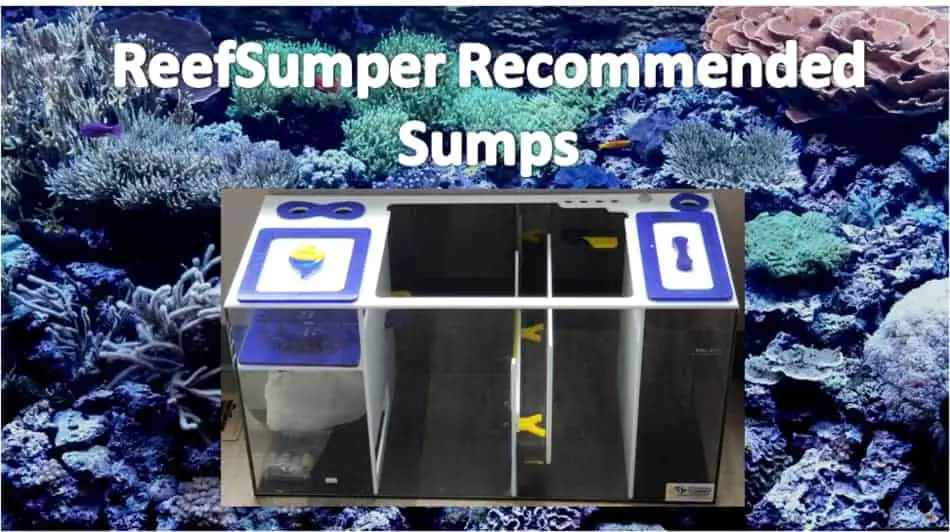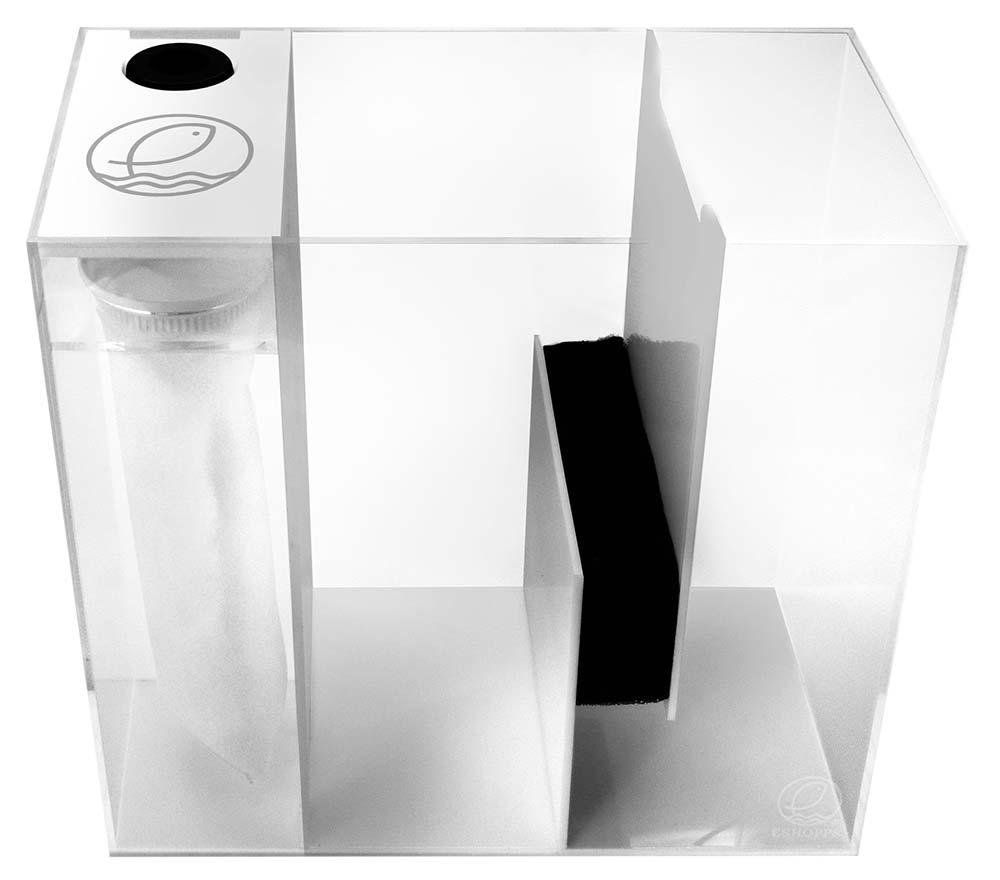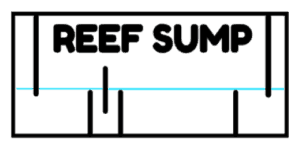
There are many benefits to having a sump on your reef tank. Some of the biggest benefits include improved water quality, flexibility in the overall system, and aesthetics. Improved water quality happens throughout the tank water’s journey to and through the sump. Sumps act as an additional water container in addition to the display tank. With the additional water volume, the ability to keep parameters stable is easier and a stable tank is usually a healthy and thriving tank. Water quality is improved by the surface skimming of waste as the water drains into the sump. Further water quality improvement happens as water is filtered through the various stages and chambers of the sump. Along the way, water gets highly oxygenated as it drains, flows through the sump, and returns to the display tank.
Sumps also offer a reefer increased flexibility in the equipment and overall maintenance strategy. Sumps provide a contained area for additional equipment and other chambers such as a refugium. Skimmers, media reactors, automatic top-offs, a refugium, other filter media, filter socks, filter rollers, and many other options can be used within the sump. With so many options available, a reefer can pick and choose the equipment and methods that fit their reefing strategy, maintenance capability, and budget.
One of my favorite benefits of having a sump is the aesthetics that a separate sump from the display tank gives you. Most equipment is able to be hidden in the sump area, the display tank can be minimized to primarily just the life within the tank. Most sumps are located beneath the display tank or in a separate fish room. The result is the ability to dampen the sound produced by equipment and the flow of water. Effective and efficient sumps to me are a work of art and just as interesting as the display tank. I love showing off the sump and explaining to visitors how it works and the different things that happen with each component and compartment within the sump.
A well-designed sump will have the appropriate chambers, space, and water volume for the specific needs of your tank and reef-keeping preferences. Here are some of the sumps that have worked well for me and that I recommend.
Eshoppes RS-75 Third Generation Sump

Situation: I first purchased this sump when I upgraded my 55-gallon origin tank from no sump to having a sump. After breaking down the 55-gallon tank this sump was then used on my 22-gallon long frag tank. For both of these tanks, I needed a smaller sump with a simple design and did not feel the need for a refugium at the time.
Background: This acrylic sump is on the smaller side of sumps with dimensions measuring 18”x10”x16”. The sump has chambers for the drain, filter sock, protein skimmer, and return. After the skimmer section, there is a bubble trap and filter sponge. The sump is rated by the manufacturer for 10-75 gallon tanks. The sump uses 4” filter socks.
Assessment: The small footprint and simple design were exactly what I was looking for in a sump for my 55-gallon origin tank and later on on the 22-gallon long frag tank. The sump is well built I have not noticed any warping or bowing of the acrylic in the multiple years in service. The sump is very quiet and has the necessary features to add volume to a tank and efficiently filter water. Currently, this sump accommodates a heater, protein skimmer, a mesh bag of carbon, and an ATO system.
Recommendation: The Eshopps RS-75 sump is a great little sump. I recommend this sump for its durable and aesthetically pleasing construction, quiet operation, and simplicity. This is a very good sump for smaller tanks less than 75 gallons is what I would recommend. Two drawbacks are there is not a refugium section and one might find the return section a little narrow if you are trying to use a large pump. Make sure to check that section for pump compatibility. The section measures 3 7/8” x 9 ½”.
Eshopps RS-75 Sump
A simple and well built sump perfect for a 10-75 gallon reef tank.

